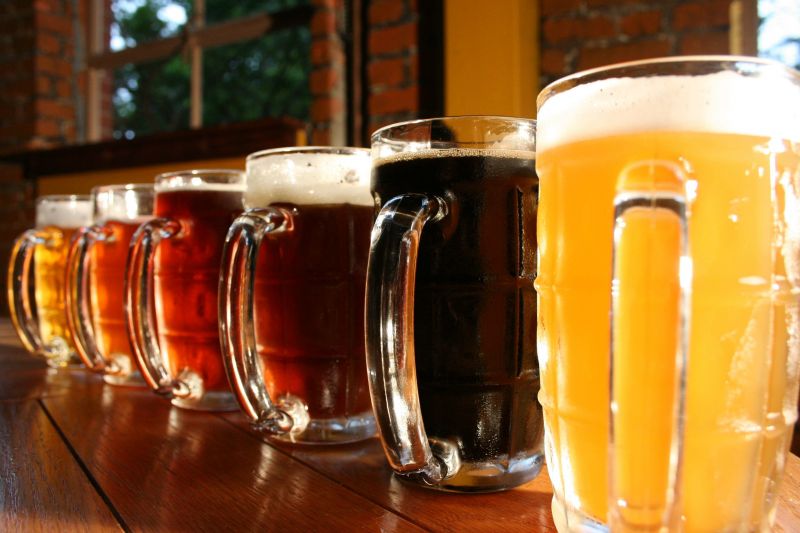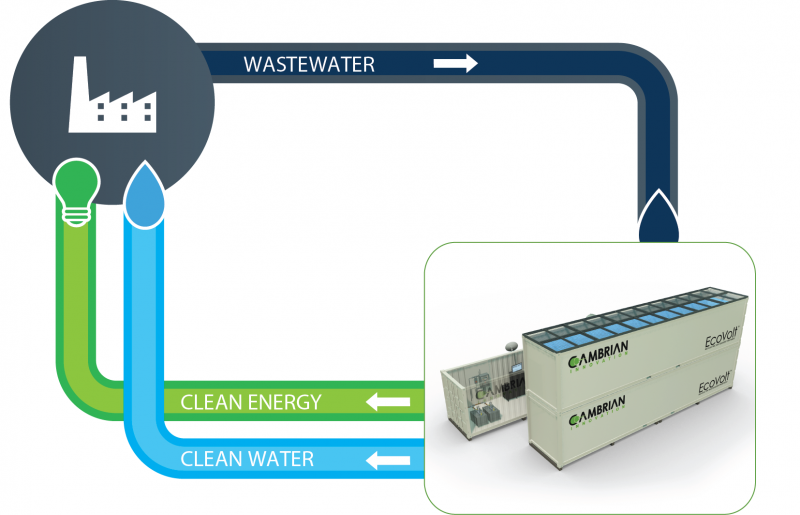Beer Makers Leading The Water-Energy Nexus Revolution
Published on by Water Network Research, Official research team of The Water Network in Technology
Breweries of all sizes in US have been investing in high efficiency equipment that cuts down their wastewater while producing usable products including methane gas, potable water and biosolids.
 That trend is not likely to change any time soon.
That trend is not likely to change any time soon.
That’s because US breweries — especially urban breweries — need to think ahead if they’re going to continue growing in an era of water scarcity and aging wastewater treatment facilities.
Cambrian Innovation And The Water-Energy Nexus
One company that’s on top of the sustainable brewery wave is the MIT spinoff Cambrian Innovation .
If that name rings a bell, it’s probably because CleanTechnica covered its EcoVolt digester technology in 2014.
Instead of sending wastewater from food and beverage production to the local sewage treatment plant, EcoVolt sets a special class of enhanced “bioelectric” microbes to munch on it.
The natural digestion process provides a low cost, high efficiency way to separates the biosolids out of the wastewater.
The result is clear, potable water that can be used for cleaning and other purposes at the facility (typically the reclaimed water is not used in the final product).
The biosolids can be sold as a soil enhancer, though some breweries simply give them away to local farmers.
A third product is methane gas, which can be used on site to offset energy costs at the brewery. That’s where the water-energy nexus comes in.
For those of you new to the topic, the water-energy nexus refers to the use of water to produce energy. It can also refer to the use of energy to treat wastewater. The water-energy nexus is of growing concern in a world where population growth, climate change, and other factors are whipping up a perfect storm of water scarcity.
Products like EcoVolt stand the water-energy nexus on its head by deploying natural processes to reclaim dirty water and produce renewable biogas.
If this is all ringing a lot of bells, the Obama Administration has been pushing for the adoption of on site digesters for the past eight years. The same type of digestion process has been popping up at breweries, wineries, food processors, restaurants, agricultural operations and anywhere else you can find copious amounts of organic wastewater (that probably includes your local sewage treatment plant, btw).
 The Bottom Line Case For Sustainability
The Bottom Line Case For Sustainability
Cambrian’s founder and CEO, Matt Silver, graciously spent some time on the phone with me this week to explain the bottom line benefits of on-site digestion in greater detail.
As Silver explained, Cambrian’s initial focus is on the craft brewery sector. Many of its clients are located in or near urban areas, where the water-energy nexus is already reaching critical mass.
Municipal wastewater treatment plants are expensive, and Silver made the point that the US is among the many countries that have fallen behind on wastewater infrastructure.
The result is that some businesses cannot grow unless they invest in on site wastewater treatment.
With conventional treatment processes, the cost can be prohibitive. Not so with Cambrian’s technology. As Silver says, “we can take that cost and convert it into a benefit.” He further elaborated:
Some of the trends driving our business have little to do with who’s in office. States like California and Texas are dealing with water scarcity issues, and that’s not going to change.
The federal government is not investing enough in wastewater treatment upgrades, so that creates an opportunity for technology that generates a reusable resource.
Silver described one brewery client in Michigan, which actually formed a partnership with its home city and Cambrian to install EcoVolt equipment. The result was a win-win: the brewery got to expand without stressing local wastewater facilities, while bringing more jobs into its hometown.
Silver drew a comparison with the emergence of distributed energy generation, propelled by technological improvements in the solar industry.
“The Michigan brewery is an example of the trend toward distributed water treatment, and we’re happy to be part of it and leading the way,” he explained.
Read full article at: Clean Technica
Media
Taxonomy
- Wastewater Use
- Water Reuse & Recycling
- Water-Energy Nexus
- Energy-Water Nexus
- Alcoholic Beverages
- Beer
- Water & Wastewater